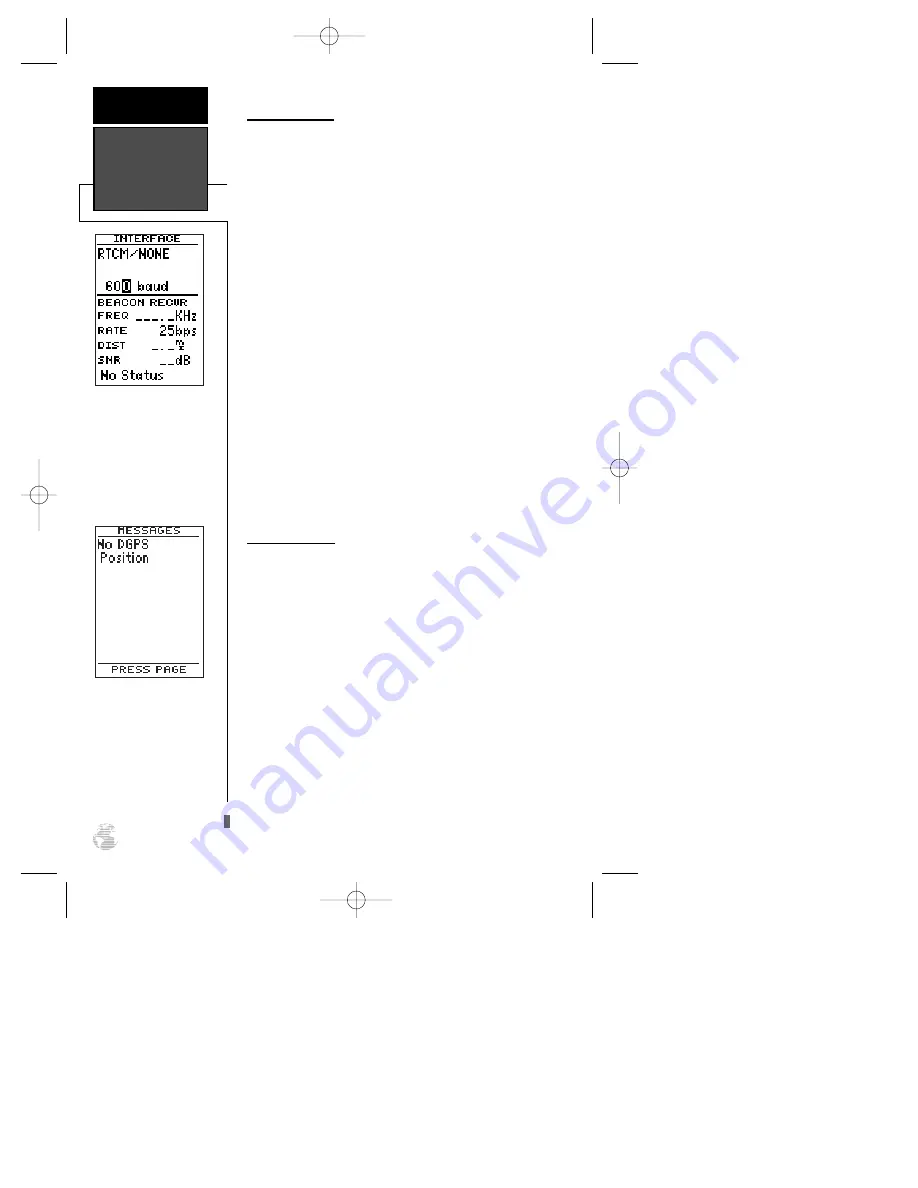
Interface Setup
The GPS 126/128’s interface page lets you specify
the formats for connecting external devices. There are
six options: GRMN/GRMN, None/None, RTCM/None,
RTCM/NMEA, NMEA/NMEA, and None/NMEA. Each
option lists the input format first, followed by the out-
put format.
To select I/O format:
1. Highlight the I/O field, and press
F
.
2. Select the desired setting, and press
F
.
The GRMN/GRMN setting is a proprietary format
that lets you exchange information such as waypoints,
routes, and track logs between two GARMIN GPS units
or a GARMIN GPS and a PC. There are ten data transfer
options: send alm, send wpt, send trk, send rte, send
prx, request alm, request wpt, request trk, request rte,
request prx.
To select a transfer option:
1. Highlight ‘HOST’, and press
F
.
2. Select a desired setting, and press
F
.
To disable all interfacing capabilities, select the
None/None setting. If you want to output NMEA data
without any differential input capability, select
‘None/NMEA.’
DGPS Interface
The last two format settings allow the differential-
ready GPS 126/128 to accept RTCM DGPS corrections
in RTCM 104 version 2.0 format. Using DGPS correc-
tions will improve receiver accuracy to 1-5 meters,
regardless of errors induced by the government’s
Selective Availability (SA) program. Two RTCM options
are available: RTCM/NONE, which allows connection to
a beacon receiver with no output capability; and
RTCM/NMEA, which allows DGPS input and NMEA
output.
Once a RTCM setting has been selected, the GPS
126/128 will either automatically try to tune the last fre-
quency and bit rate you selected or will switch to the
default frequency of 304.0 kHz with a bit rate of 100
bps if no previous beacon has been tuned. You may also
enter your own frequency and bit rate if desired.
Interface Setup
& DGPS
REFERENCE
44
The selectable baud rate is
available for all RTCM
interface options.
Alert messages will signal
any problems with DGPS
operation.
126/128 Manual (new) 6/15/98 9:51 AM Page 44
















































